11 Best first-time Europe itineraries for 1, 2, or 3 weeks
Europe is going to be very busy in the summer of 2024 as the world is back to normal and travel demand is higher than ever. One other key factor is that most European currencies are still hovering at lower levels historically compared to the US dollar, which means that Europe will feel somewhat cheap again this year. In fact, according to our World Backpacker Index, European cities like Lisbon, Madrid, and Munich are about 30% cheaper to visit than Boston, Chicago, and New York City. In other words, flying to Europe might seem expensive, but most things will be cheaper once you get there compared to the costs of visiting a large US city.
Below you’ll find 11 of the most popular and best itineraries for a first visit to Europe. Your first visit is not really the time to be different or creative, and the famous destinations tend to be popular for a reason. In other words, it’s kind of silly to visit, say, Bulgaria, if you’ve not yet been to France or Italy. I lay out the best options along with how long to stay in each place as a general guide. I also discuss Mediterranean cruises, which can actually be an amazing way to see a lot of Europe on your first visit, especially if you don’t like going back and forth to train stations and airports every 2 or 3 days.
For a bit of fun you might be interested in the cheapest 5-star hotels in Europe, which start at US$80 per night for really nice hotels. It helps show that if you choose some of the cheaper cities, you can treat yourself to some luxury that you can’t afford in most other places.
This article was last updated in March, 2024.
There are 11 starter itineraries described in detail below
- Classic London and Paris
- England and Scotland
- Paris and Italy
- Mediterranean cruise
- France, Belgium, and Netherlands
- Paris and elsewhere in France
- Italy
- Spain
- Germany
- Switzerland
- Best of cheap eastern Europe
For each itinerary there are suggestions of other destinations that are easy to add on to the main cities.
Note: This article was most recently updated in March, 2024
Building the best itinerary for your first trip to Europe
Below there are 11 popular itineraries for one week in Europe. If you’ve only got a week then choose one of them and assume you’ll return again to conquer more of this amazing part of the world. If you’ve got more time then you can choose from some of the top add-on suggestions for each one.
Start in the most famous cities
Your first visit to Europe is no time to try to be different or edgy. I recommend that you focus on these 5 great cities before you start branching out into cheaper or more obscure places.
Keep your travel days to a minimum
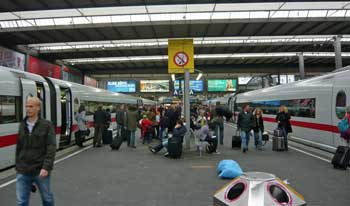
Spend 3 (or 4) nights in almost every major city
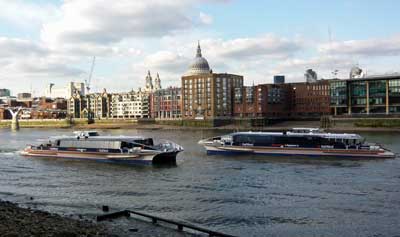
So many first-time visitors are initially planning on spending only 1 or 2 nights in major cities that I wrote a detailed explanation of why 3 nights is ideal for almost all European cities, even if you want to see as much as possible.
3 (or 4) nights will be enough for any city on your first trip
Most first-time visitors are tempted to move too quickly, but it can also be a mistake to move too slowly. It’s really amazing how much you can see in two full sightseeing days. If you spend too long in one city you’ll end up seeing things that are way down your list, while you could be in another city seeing things at the top of your list there.
Choose cities that are easy to reach from each other
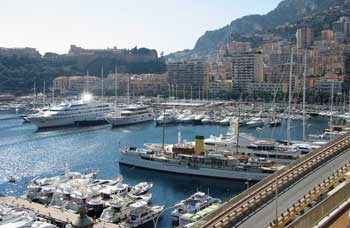
For your first trip it’s best to visit cities that are no more than a 5-hour train ride apart.
Choose cities that are connected by reasonable train rides rather than flights
To build on the point above, finding cheap flights within Europe is easy, but train travel is about a million times more enjoyable and less stressful. You’ll enjoy the train rides almost as much as the cities, so focus on places that are within 5 hours of each other by train.
Start with one of the classic itineraries below, and then add to it if you have more time
If you only have 7 days then you’ll find a list below of classic itineraries that are well-suited to a first visit to Europe. Hopefully you have more than 7 days though, and if you do you can add in one or more of the suggested add-on cities to build an itinerary that appeals most to you.
Best 1-week itineraries for the first time in Europe
Itinerary 1: Classic London and Paris
Fly into either city and take the 2-hour Eurostar train between them
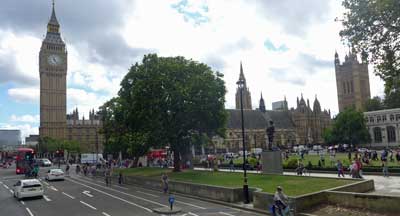
London highlights
- Big Ben and Parliament
- Westminster Abbey and St. Paul’s Cathedral
- Tower of London and Tower Bridge
- West End shows (Broadway equivalent) and classic pubs
- Buckingham Palace and Windsor Castle
Paris is actually far more beautiful than London and the food is famously much better as well. Since Paris gets so many tourists from non-French speaking countries, it’s easy to get by on just English, and the Metro system makes it fast and easy to get around. The architecture of both cities is amazing from the Tower of London, Big Ben, Westminster Abbey to the Louvre and the Eiffel Tower. These cities each pack a huge punch and they are very different from each other as well. Actually, England is arguably the best choice for your first trip to Europe.
Paris highlights
- Eiffel Tower
- Louvre Museum and Museum de Orsay
- Arc de Triomphe and other monuments
- Montmartre neighborhood and Sacré Coeur Cathedral
- Probably the world’s best affordable restaurants and wine
Best add-ons to London and Paris
- Edinburgh (2 or 3 nights, from London)
- Amsterdam (2 or 3 nights, from Paris)
- Bruges and Brussels (2 nights, from Paris)
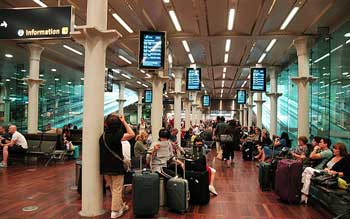
>>>Best one-week London and Paris itinerary in detail
>>>Check London hotel deals
>>>Check Paris hotel deals
Itinerary 2: England and Scotland
- London (3 or 4 nights)
- York (1 night)
- Edinburgh, Scotland (2 or 3 nights)
- Inverness, Scotland (2 or 3 nights)
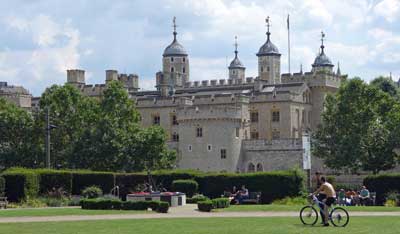
York is a small Roman city with intact city walls and one of the most famous cathedrals in Europe. Edinburgh is not only the capital of Scotland, but it’s easily the second most interesting city in all of Britain. If your time is short, skip York and spend more time in Edinburgh.
If you prefer to focus on the south of England on your first trip then the best option is to go to Bath or nearby Bristol after London. Bath is another of England’s top destinations and it’s a gorgeous city that has been a spa resort for many centuries. It’s also reasonably close to Stonehenge. You can also easily get to Cornwall in England’s southwest corner from Bath, and that’s a whole different and fascinating experience (with nicer weather than up north).
If you’ve got more than a week and want to spend more time in Scotland, especially in the summer months, the place to head to is Inverness. It’s a small town that is considered the gateway to the Scottish Highlands, but it’s an interesting and charming place on its own. You can take day-trips by bus to the highlights of the Highlands including the Isle of Skye and Loch Ness. Between you and me, it’s better to minimize time in Loch Ness or skip it altogether because it’s not one of the more photogenic parts of Scotland and the monster has always been a hoax.
Travel times between the recommended places
- London to York by train: 2 hours
- York to Edinburgh by train: 2.5 hours
- London to Edinburgh by train: 4 hours
- Edinburgh to Inverness by train: 3.5 hours
- London to Bath by train: 85 minutes
Best add-ons to England and Scotland
If you think you want to spend your whole trip in Britain you should have a look at our article on the best itineraries in England, Scotland, and Wales.
>>>Check London hotel deals
>>>Check Edinburgh hotel deals
Itinerary 3: Paris and Italy
- Paris (3 or 4 nights)
- Venice (1 night)
- Florence (2 or 3 nights)
- Rome (3 nights)
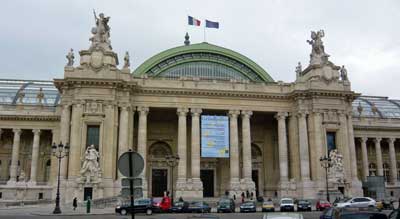
From Paris you can easily fly to Venice (or nearby Treviso) where you should try to spend about 24 hours. Venice is small enough to see in a full day, and so crowded that most people are satisfied to leave after that day. The key is to stay in the main part of the main island so you can enjoy Venice before the cruise passengers and day-trippers arrive, and also after they leave for the day. Two nights in Venice would not be wasted time, and it’s possibly the most gorgeous city in the entire world, but you can see the best of it in a bit over 24 hours.
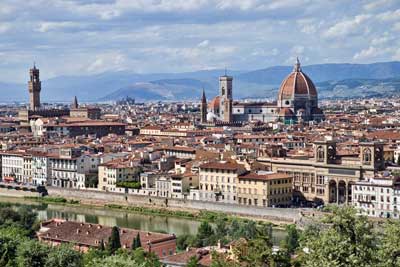
Rome also lives up to the hype and spending a day in the Vatican City will be a highlight even for non-Catholics, but it’s also a crowded and busy city so three days is usually enough for most people. Similar to Paris, Rome is an unusually beautiful city from almost any angle when you are in the historical center. You’ll walk through a stunning piazza (town square) and then turn a corner and you’ll see gorgeous buildings or public statues that are as nice as anything in the museums. Seriously, it’s worth a visit.
Paris to Venice flight: 1 hour 35 minutes
Venice to Florence by train: 1 hour 53 minutes
Florence to Rome by train: 1 hour 16 minutes
You can of course instead fly from Paris to Rome and then go north to Florence and then to Venice and fly home (or back to Paris) from there, and it would be just as enjoyable.
Best add-ons to Paris and Italy
France
- Nice/Cannes/Monaco (2 or 3 nights)
- Avignon (2 nights)
- Bourges (2 nights)
- Bordeaux (2 nights)
- Aix-en-Provence (2 nights)
- Reims (2 nights)
- Dijon/Burgundy (2 nights)
Italy
- Milan (1 or 2 nights)
- Lake Como (2 nights)
- Siena (2 nights)
- Cinque Terre (1 night)
- Naples/Sorrento/Amalfi Coast/Pompeii/Capri (3 to 5 nights)
- Sicily (3 to 4 nights)
>>>Much more information in this article about the best France and Italy itineraries
>>>Check Paris hotel deals
>>>Check Venice hotel deals
>>>Check Florence hotel deals
>>>Check Rome hotel deals
Itinerary 4: Mediterranean cruise
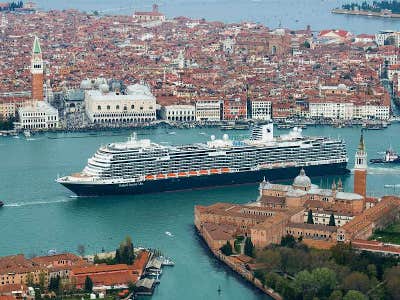
In spite of the reputation of cruises to be floating buffets, they can actually be an excellent way to visit a great number of amazing European cities in a short time. The ship typically is in port from the early morning until mid evening, often giving you the opportunity to have dinner in the city (unlike Caribbean cruises). Better still, the cruise ports are often near the center of town, so you can just walk off the ship and do sightseeing on foot or by public transportation.
Mediterranean cruises usually start at 7 nights but can go up to 3 weeks, which can provide an amazing tour of the entire region without having to pack and repack your bags more than once. They also can provide excellent value, especially compared to the price of taking trains or flights and finding new hotels in every destination.
Most popular Mediterranean departure ports
Barcelona, Spain – It’s an easy port to reach. Ships generally go from Barcelona with stops in France and then Italy.
Rome (Civitavecchia), Italy – The port isn’t very close to Rome, but it’s easy to get back and forth. Ships go west to France and Spain as well as south around the tip of Italy and then on to Croatia, Venice, and to Greece.
Venice, Italy – The cruise ships no longer dock close to the best tourist areas, but it’s easy enough to visit Venice for a day or two before boarding a ship. Ships starting in Venice go south and then head west and to Rome and then to France, or they go south to Croatia and then head east to Greece.
Athens, Greece – The cruise port of Piraeus is just south of Athens and easy to reach. Ships from Athens usually head west towards Croatia, Italy, France, and Spain, but there are also ships that visit Greek islands and Turkey.
>>>Check for deals on Mediterranean cruises
Alternative to consider: a river cruise
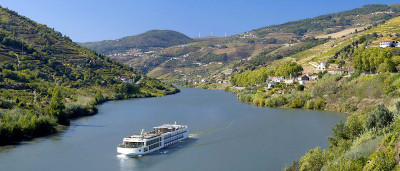
Amsterdam, Budapest, and Prague are some of the most popular river cruise ports, but there are dozens of others including many smaller towns in France where few other tourists will be when you stroll off the ship. There is little or no entertainment on the river cruise ships, but passengers don’t miss it because the entire day and into the evening is spent just steps from local cultural offerings and restaurants.
>>>Check for Europe and river cruise deals
Itinerary 5: France, Belgium, and Netherlands
Paris to Brussels: 1 hour 22 minutes
Brussels to Bruge: 58 minutes
Bruges to Amsterdam: 2 hours 45 minutes
Amsterdam to Paris: 3 hours 17 minutes
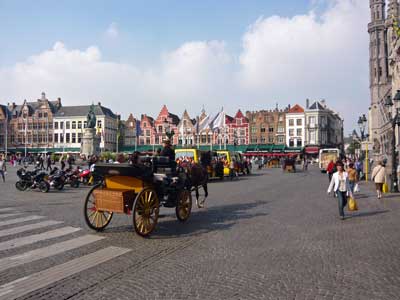
Spending 4 nights in Paris and 3 nights in Amsterdam would be a great trip, but if you want to see something else you’ve got a couple options in between. My advice is to spend an afternoon looking around the Grand Place (main square) in Brussels and then hop a 58-minute train ride to Bruges for a night or two. Brussels isn’t a great tourist city, but Bruges really is so it’s a better option for most people. Whatever you choose out of this group, you can be back in Paris on another high-speed train for your flight home.
Best add-ons to France, Belgium, and Netherlands
- Luxembourg City (1 or 2 nights)
- Cologne, Germany (1 or 2 nights)
- London (3 or 4 nights)
- Interlaken, Switzerland (2 or 3 nights)
>>>Check Paris hotel deals
>>>Check Bruges hotel deals
>>>Check Amsterdam hotel deals
Itinerary 6: Paris and elsewhere in France
- Paris (3 or 4 nights)
And a choice of:
- Nice/Cannes/Monaco (2 or 3 nights)
- Avignon (2 nights)
- Bourges (2 nights)
- Bordeaux (2 nights)
- Aix-en-Provence (2 nights)
- Reims (2 nights)
- Dijon/Burgundy (2 nights)
- Normandy (2 nights)
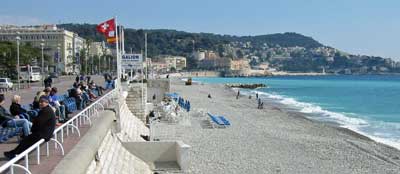
While Nice is a wonderful tourist city for a look at the French Riviera, the other larger cities of Lyon and Marseilles are probably better saved for a future trip because they are light on key sights compared to many smaller towns. Wine lovers can rent a car or take trains into Bordeaux or Burgundy. Since you can get between most of these towns by train in 2 hours or less, spending only 2 nights in each one is a reasonable option if you want to see a lot in a short time.
Normandy is an interesting choice and easy to reach in only about two hours by train from Paris. Some visitors like to see the famous WWII beaches and memorials, while others (especially in summer) like to check out one or more of the beach-resort towns. Deauville is one of the more famous of those, and it’s also famous for its horse race track and as one of the epicenters of the industry in Europe.
Best add-ons to Paris and elsewhere
- More France, of course
- London (3 or 4 nights)
- Interlaken, Switzerland (2 or 3 nights)
- Amsterdam (2 or 3 nights)
>>>Check Paris hotel deals
>>>Check Nice hotel deals
Itinerary 7: Italy
Rome to Florence: 1 hour 16 minutes
Florence to Venice: 1 hour 53 minutes
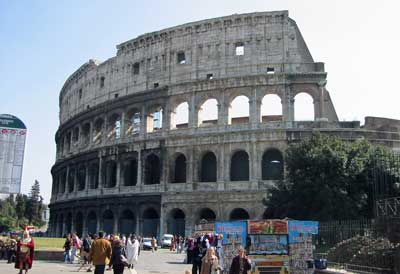
Venice is small enough that you can see the main sights in about 24 hours, and it’s so insanely crowded that many people tire of it after about a day as well. It’s better to pay more for a hotel to be on the main island and visit quickly than to save money with a hotel on the mainland where you’ll be in crowds going back and forth as well. Florence is the most relaxing of the 3, and also a great base for side trips to Pisa, Siena, and Cinque Terre, just to name a few.
Going to Italy? Here are the best first-time Italy itineraries for 3 days to 2 weeks (in much greater detail)
Best add-ons to Italy
- Milan (1 or 2 nights)
- Lake Como (2 nights)
- Siena (2 nights)
- Cinque Terre (1 night)
- Naples/Sorrento/Amalfi Coast/Pompeii/Capri (3 to 5 nights)
- Sicily (3 to 4 nights)
>>>Check Rome hotel deals
>>>Check Florence hotel deals
>>>Check Venice hotel deals
Itinerary 8: Spain
Madrid to Barcelona: 2 hours 30 minutes
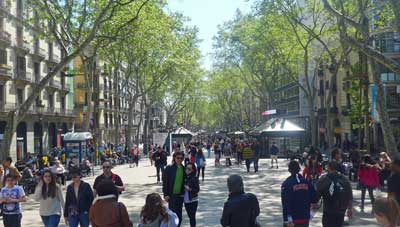
A huge part of Spain’s tourism industry is built around its southern beaches and islands such as Ibiza, Mallorca, and Tenerife (in the Canary Islands). For most people it’s best to ignore those places on your first trip because none of the beaches are special enough to spend days on them compared to the culture of the cities.
Best add-ons to Spain
By popular demand, I’ve added a full article on where to go in Spain with itineraries from 7 to 10 days up to two weeks.
>>>Check Madrid hotel deals
>>>Check Barcelona hotel deals
>>>Check Lisbon hotel deals
Itinerary 9: Germany
Berlin to Munich: 6 hours 2 minutes
Munich to Rothenburg ob der Tauber: 2 hours 56 minutes
Munich to Füssen: 2 hours 4 minutes
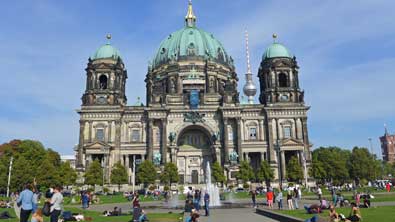
Those two cities are the keys to a Germany visit, and after that you’ve got a wide variety of choices. I cover most of the popular choices in my article on where to go in Germany, which covers several smaller towns that are major highlights.
Best add-ons to Germany
- Cologne (1 or 2 nights)
- Hamburg (2 or 3 nights)
- Amsterdam (3 nights)
- Prague (3 nights)
- Salzburg (2 or 3 nights)
- Vienna (3 nights)
- Interlaken, Switzerland (3 nights)
- Lucerne, Switzerland (2 or 3 nights)
>>>Check Berlin hotel deals
>>>Check Munich hotel deals
Itinerary 10: Switzerland
- Interlaken (3 nights)
- Bern (1 night)
- Lucerne (3 nights)
Zurich Airport to Interlaken: 2 hours 10 minutes
Interlaken to Bern: 53 minutes
Bern to Lucerne: 1 hour 50 minutes
Lucerne to Zurich Airport: 1 hour 3 minutes
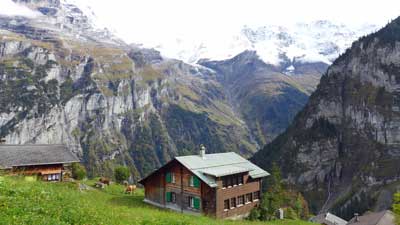
Interlaken is the best hub for the most dramatic Alps views and experiences. The one-hour cable car ride up to the Schilthorn observation deck is something you’ll never forget, and the only thing that might be more dramatic is the train ride up to the Jungfraujoch station, which is the highest in Europe. Lucerne is almost as beautiful with a scenic lake at its heart and also great mountaintop views nearby. If you do want to see a Swiss city then the capital of Bern is the most interesting and photogenic on a short visit. Read more about where to go in Switzerland for even more ideas.
Best add-ons to Switzerland
>>>Check Interlaken hotel deals
>>>Check Lucerne hotel deals
Itinerary 11: Eastern Europe’s best cheap cities
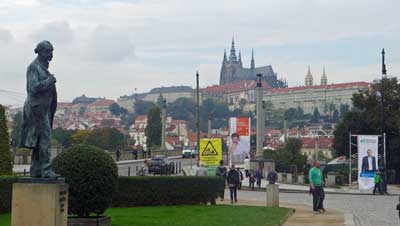
Each of these cities is beautiful and historic, but English is less widely spoken so they can also be quite a bit more challenging for a first-time visitor. Another difficulty is that the trains between them are still quite slow compared to the high-speed rail in the West, so it takes most of a day from one to another, and a bus is often a better choice. I cover this best cheap Europe itinerary more fully in the linked article.
Prague to Budapest: 6 hours 41 minutes
Budapest to Krakow: 9 hours 54 minutes (flying might be better)
Best add-ons to cheap Eastern Europe
- Cesky Krumlov, Czechia (2 nights)
- Ljubljana, Slovenia (2 or 3 nights)
- Split, Croatia (3 nights)
- Belgrade, Serbia (2 or 3 nights)
- Sarajevo, Bosnia and Herzegovina (2 or 3 nights)
- Sofia, Bulgaria (2 or 3 nights)
>>>Check Prague hotel deals
>>>Check Budapest hotel deals
>>>Check Krakow hotel deals


Dear Roger, Thanks so much for your inputs on my planned trip.
Keeping in mind what you have suggested, this is what I was hoping to do
Arrive at Paris
3/4 nights at Paris
Then – option 1 – Paris – Luxemborg – Cologne – Amsterdam – Brussles – Bruges. – about 12 days between these cities.
Option 2 – drop cologne or luxemborg or both
(This part of the trip, preferably by train – what do you suggest)
From Either Bruges or any port in Benelux, can I do a Overnight FERRY to UK. If yes, which port is advised to depart from, and arrive, keeping in mind I will have to do immigration to UK.
In UK, we are thinking of doing a more extensive trip – about 12 days, so we dont have to go back to UK again. (its a pain just getting UK visa, and too expensive for even visa) My must do’s are
London – 3 nights
Belfast – 2/3 nights – my kids want to do studio tour of Pain hall Studios
Edinburg – 2 nights
York / lake dist – 1 night
Other places we would like to visit are –
Oxford, Cambridge, Manchester, Stonehenge, Bath, Liverpool
What would you suggest we should definetely do from this, and what should we drop?
Also what would be best way to get around – specially if we must do Belfast?
In Some of the iteneraries for UK, I saw a round trip kind of thing –
starting from London – Bath – Dublin – Belfast – Edinburgh – York – London.
If we could do something like that, what would be best way to get around?
ALSO WHILE AT UK – IF POSSIBLE we would like to do the following
(a) see a play on Broadway
(b) see a football match – preferably Arsenal club match
Can you give any pointers how to go about tickets, and what you would suggest for above.
From London, we can either fly back to Mumbai, or take the Eurostar to Paris to flyback (basically depending upon the cost of flight)
I believe we need to do probably one or two more trips to Europe. So saving Italy, Switzerland, Spain, Greece, as well as scandinavian, Nordic, Eastern European regions for later trips
Looking forward for your valuable comments. Thanks so much.
Nancy,
I’ll try to address each question in order.
I would save Luxembourg and Cologne for another trip, especially as I strongly recommend 3 nights in almost any city you visit. But actually, I have mixed feelings about Brussels because outside of the interesting historical center, it’s pretty dull and it’s built for government employees and business travelers. So you might actually stop for a night in Luxembourg City (it’s small) and then two nights in Cologne, and then just spend a few hours in Brussels on your way to Bruges for the night.
I’ve taken those overnight ferries between Netherlands and England before, and it seems that they still run from Hook of Holland to Norwich. In fact, you can take them all the way from Amsterdam to London and they include the bus or train on both ends. The problem with them is that they take about 13 hours and they aren’t that cheap. The base fare is just for a normal seat on the overnight ferry, and if you want a bed in a cabin it’s a lot more. Now that you can take the Eurostar train from Brussels to London in a bit over 2 hours, taking the ferry is less appealing. If you buy your Eurostar ticket at least a few weeks in advance it will probably be about the same price or maybe cheaper.
I haven’t made it to Belfast yet so I’m not much help, but I do know it’s not one of the UK’s top tourist towns. And of course you’d have to fly or take a ferry there and back as well. Here are my recommendations for where to go in England, Scotland, and Wales. On such a short trip I wouldn’t recommend Stonehenge unless you did a day trip from London that also included Bath. Stonehenge is interesting, but it takes a whole day to see it, so it’s not a good use of your limited time. I would also say that Oxford and Cambridge might be good day trips from London, but not worth spending a night in either. I found the Lake District to be a bit of a dud as well. It’s a pleasant place to spend a few days if you are stuck in London or Manchester most of the time, but on a trip like this there isn’t much to see.
It’s easy to see a Broadway play in London, and there they call the district the “West End”. There are dozens of theaters within walking distance of each other, and you can get half price tickets in Leicester Square on the day of the show for some of the ones with remaining tickets. You could also see a show in Edinburgh, but with far fewer options.
Getting a ticket for a Premiere League game is difficult unless you arrange it way in advance. Especially for a popular team like Arsenal, all of the games are sold out well in advance and you even need to be a member to buy a ticket. You could get a ticket from an agency, but it would cost a LOT. If you can see Paris on this trip I think it would be worth it. Paris is amazing and since it’s only a bit over 2 hours from London on the Eurostar, it’s very easy to reach. Let me know if you have any other questions. -Roger
Thanks so Much Roger for a very detailed input to my plans. I am working around your suggestions and also looking at itenerary, costs, hotel and train bookings. I think I may come back to you on how best to do the eurorail bookings, once I have my destinations and dates in place. Thanks for such a quick reply. I have already gone thru multiple links on your website. Its really very well put together. Thanks a ton… Nancy
Hi Roger,
First of all, I have to admit that this website has been very useful to me. However, I think I still need your advices for a trip I am planning for summer 2018. I will be doing an internship in Spain near Valencia for 5 weeks until mid August. I would like to stay 2 weeks in Europe before flying back to America. In the same way, I am probably going to buy separate flights since I don’t actually know from which airport I am going to fly back.
I have never been to Europe but the countries that caught my attention the most are France, Italy, UK and Switzerland. I am aware I will not be able to go to every single one of them, but if I had to choose among all the countries in Europe, I would choose those ones for a first trip.
Therefore, I hope you can help me with my trip.
Have a good one
Sincerely,
Gabriel
Gabriel,
I’m happy that this has helped and I will try to help you with this, although maybe not as much as you hoped. If you have two weeks in Europe after Valencia I would try to choose 4 or 5 total cities (rather than countries), and it’s best if they are close together and can be reached by train in 5 hours or less. I’d highly suggest Paris and London, and you can do those in 3 or 4 days each. You can also take the Eurostar train between them in about two hours.
For your other week you could spend 1 day in Venice, 3 days in Florence, and 3 days in Rome. That is the best and fastest trip to Italy that covers the best cities. You could fly between Rome and Paris or London, or you could fly from Paris or London to Venice. If you would rather go to Switzerland you might have a scan of my article on where to go in Switzerland on a short trip. Once you start thinking in terms of cities rather than countries, it should become more clear. I’ll be happy to help more if you need it. -Roger
Thanks Roger, for your quick reply. I like your ideas. I suspect this trip will pave the way for future trips, so there will be plenty of time to revisit places as well as try new ones. Best, Laura
Hi Roger,
Love all your fantastic information! My husband and I are headed to the Sout of France for a week befinning April5. It is a reward trip for the top salespeople in his company, so the week is pre-planned for us staying in Monte Carlo. They do have daily excursions, a shopping trip in Milan, etc… but we have never been to Europe before and want to extend the trip. We have NO idea where to begin. We can only extend the trip by a week, and definitely want to see Paris, and Italy if possible. What do you think is a time effective way to see the best of the best? We love to shop and eat:) Thank you!!! We are really excited to explore!!!
Marlo,
Wow! That sounds amazing. Monte Carlo, as you no doubt know, is one small neighborhood in Monaco, which is tiny itself. You’ll be able to explore all of Monaco in a day or so, which means you’ll want to move on as soon as you can. One tricky thing is that Nice, which is about 20 minutes by train from Monaco, has fairly slow train connections to most places. You can take a train from Nice to Paris in 5 hours 44 minutes, but from Nice to Venice it’s a bit over 7 hours (from Monaco it’s still a bit over 7 hours). Still, I like your idea of seeing Paris and at least something in Italy.
My suggestion would be to head right from Monaco to Paris by train, changing in Nice, and spend 3 or maybe 4 nights there. Then it will be best to fly to Italy. With the remaining 3 or 4 days I would fly into Rome and spend my time there. Florence and Venice are the other members of Italy’s “Big 3” but with only 3 or 4 days you don’t have enough time to enjoy more than just one city so I would choose Rome. In fact, I would do 4 nights in Paris and 3 nights in Rome and then fly home from there. Rome itself is obviously one of the world’s great cities and tourist destinations, but the Vatican is there as well and it’s worth a day on its own. Paris and Rome both have excellent shopping and eating. Let me know if you have any other questions. -Roger
Roger,
I love your website, so very well-organized.
I’m a librarian, age 50+ with a lot of vacation time, and plan to travel to Europe solo in late Feb/March. (leaving husband and college-aged kids at home) We saw all of Southern Germany by car in 1993, my only trip to Europe. (and Salzburg)
I’m budget minded, will use credit card travel points for airfare, open jaw. I’m willing to stay in hostels to save money and am confident about solo travel, trains travel as we are near NYC. My dates are flexible and I can be gone for 3 weeks to a month. Starting late Feb., early March. I thought avoiding Easter would be economical, but I notice a lot more economical flights the two weeks before Good Friday. (cheaper than if I use earlier dates)
For open jaw flights, using my credit card points, the lowest/most affordable combo cites in and out of Newark are London, Rome, Paris. Many are direct. But I also see open jaw combos using Dublin, Zurich, Barcelona, etc. Central European cities are much higher.
I love the look of this person’s itinerary, except for the long rides to Krakow, Budapest and Venice. (And I’d want to add London and Paris on to it) I’m willing to try night trains, but worry about getting sleep, potentially not having access to accomodations with an early arrival.
https://maketimetoseetheworld.com/europe-rail-25-days-highlights-tour/
I also like your 9 first-timer lists with add-ons to Paris/London/Amsterdam, Italy including Interlaken or some Switzerland.
I could do two trips this year, one in spring, one in fall. Or, I could just make one really longer trip now, getting the most out of this trip. I’d buy a regional rail pass, if recommended, where it would save money/offer flexibility.
Central Europe- Prague, Budapest, Vienna, Krakow interest me as much as London/Paris, but I would not want to skimp on Italy either. Unless I made Italy and perhaps Spain/Portugal, Croatia a whole separate trip. Or Italy and Central Europe a separate trip. Krakow seems to be the city hardest to get to, economically/efficiently in relation to most itineraries that don’t include the rest of Poland. Though I see cheap flights to Krakow from Berlin, London, Edinburgh in the right time frame.
Can you recommend a logical sequence for train travel, possibly including a few flights or Ferries, within Europe for close to a full month? Prioritizing London, Edinburgh, Paris, Interlaken-some Switzerland, Amsterdam, Some central Europe and some Italy? Using Paris, Rome and London as open jaw flights? (Or others, such as Zurich, Barcelona, Berlin)
I find that there are so many choices, it is hard to nail it down, without second guessing. The thrifty-person inside me wants to spend wisely, travel efficiently. Avoid long train rides, except when over-night if efficient.
Is it wise to split London/Paris? Not taking the train from one to the other, but instead starting on one city, seeing other country regions, and then ending in the other? Or similarly, starting in Amsterdam or Berlin and ending in Rome?
Thanks
Laura
Laura,
Thank you. I know what you mean about the amazing number of choices and how it can feel overwhelming. I think your most efficient route would be to fly into London and then take the train to Edinburgh. Then fly to Amsterdam and then the train down to Paris. From Paris you can take the train to Interlaken. After that you can take the gorgeous train ride from Interlaken to Milan and then to Venice before taking the train down to Florence and then Rome for your flight home. If you spent 3 days or so in each of those cities it would take 24 days, but I’d say Venice in about 24 hours is enough because it’s so crowded and expensive (and yet still amazing).
Another way of doing it would be to go from Amsterdam to Berlin to Prague to Munich to Interlaken and then down into Italy, but that would be skipping Paris unless you flew there from Rome on your way home. Or you could visit London and then Edinburgh and then back to London before taking the Eurostar to Paris and then up to Amsterdam and Berlin and Prague etc. Those train tickets between London and Edinburgh are pretty cheap if you buy far enough in advance and can find a promotional fare.
You may also want to scan my article on night trains in Europe. They are becoming less common and popular each year, and I’m not really a fan of them in most cases. I hope this helps. Let me know if you have any other questions. -Roger
Hi Roger
I am Nancy from Mumbai, India. In April 2018 we are planning a 4 week family trip (husband and 2 boys -20/23 years old) to Europe. My kids have not been to Europe before. We want England, Scotland and possibly Belfast (sons are Game of Throne fans), Paris, North West Europe – Brussels, Bruges, Antwerp, Rotterdam, Hague, Amsterdam, Parts of West Germany (Cologne, Dusseldorf, Dortmund, Bonn, Frankfurt) Luxembourg. If time permits, we would like to add either Italy or Switzerland. WE are interested in Literature, Theatre, culture, history, museums, world war, Karl Marx, football (Arsenal fans), Harry Potter, Game of Thrones, Dan Brown. We want to fly into one city, take local trains/buses for easy transport between cities, and fly out of the last city, without retracting too much of the trip. Would you be able to give us some suggestions and some itinerary. I found your replies are very informative and exhaustive. Thanks in advance
Nancy,
I’ll be happy to try to help. You’ve got quite a long list there and I wouldn’t recommend trying to visit everything on there, but in 4 weeks you will be able to visit quite a bit. My strong recommendation for trips like this is to plan on staying 3 nights in almost any city you visit, except for 1 or 2 nights in some of the smallest cities such as Venice or Bruges. With that in mind if you have 28 days you should try to find maybe 9 or 10 cities to visit, and then see how well you can string them together with trains.
You could start by flying into London and spending 3 nights there and then take a train up to Edinburgh for 2 or 3 nights there. Getting to Belfast and then getting somewhere else would take quite a bit of time, so I’d save that for a future trip.
Then I would fly from Edinburgh to Amsterdam and base yourself there for 3 or possibly more days. Amsterdam is a beautiful, interesting, and historic city, and most other cities around it are fairly dull by comparison. If you wanted to see Rotterdam, the Hague, and a few other things in the Netherlands such as Delft, I would do it on an all-day bus tour from Amsterdam. Brussels has an interesting city center, but I recommend seeing that in an afternoon and then going to Bruges for 2 or 3 days, which is a better tourist city. Brussels is very much oriented to bureaucrats and business travelers. And being honest, those cities in west Germany are all pretty generic as well. Cologne has an interesting city center and its famous cathedral, but Dusseldorf, Dortmund, Bonn, and Frankfurt were all mostly destroyed in WWII and now they are modern business cities without much to see. Luxembourg City is nice and quite unusual though.
And of course you definitely want to go to Paris for 3 or perhaps 4 days. It really lives up to the hype. If you want to visit Switzerland I would recommend at least scanning my article on where to go in Switzerland on a short trip. I would also put Italy as a high priority, as it’s another place that really impresses even jaded travelers. Have a look at my suggestions in my article on where to go in France and Italy. On even a short visit you definitely want at least a day in Venice and hopefully 3 nights in Florence and 3 nights in Rome.
I’m happy to help more with this once you get your basic itinerary a bit more together. I’m sure this will be a very memorable trip and you can visit many places, even if not all of them on your list. -Roger
Hi Roger: I’m planning a 15 day trip to Europe with my 17 and 15 year olds. We are flying into Schiphol and staying a few days with our friends in Breda. It looks like we could day trip to Brugge and Brussels (if you recommend). Then I thought we would high speed train to Paris (two nights) then to Zurich, on to Austria (I’m thinking two nights), Prague (possibly Berlin) working our way to Warsaw (best friends live there and we will spend a few nights there with them). Can you please give me your thoughts on this itinerary? Any suggestions on where the best cities to go to along this route?
This will be my kids first trip to Europe (we live in the states). I appreciate your feedback.
Oh and we were thinking we would take trains pretty much the whole way to Poland (if it seems realistic)
Rosie,
That sounds like a great trip for a family. But I don’t think you’ll have enough time to visit all of the places on your list. If you have 15 days and you spend the first 3 in the Netherlands you have 12 left. If you want to spend the last 3 days in Warsaw you have 9 days in between. My strong recommendation is to spend 3 nights in pretty much any place you visit, because if you try to go faster it means spending too much time on trains and in train stations and checking in and out of hotels.
I would go from Breda straight to Paris and spend 3 (or possibly 4) nights there. If you still want to do Warsaw then you are down to 6 nights. Unless you have something specific to see in Zurich, I would skip it (it’s very expensive and a bit boring) and go to Interlaken instead. You can read about Interlaken in my article on where to go on a short Switzerland visit. The problem you’d have at that point is that it would take almost two travel days to get from Interlaken to Warsaw by train, so there is no efficient city to visit in between. Trains go much slower once you get into the eastern countries such as Czechia and Poland, and bus travel is generally about the same speed with more departure times.
In other words, if you want to visit Warsaw it’s probably best to fly. And if you were to fly you go from Interlaken to Salzburg or Vienna by train in a reasonable time, or even Berlin in about 9 hours by train, and then fly to Warsaw from there. If you can save Warsaw for a future trip you could visit two of those cities I mentioned, including even Prague if you wanted. I’m happy to help more as your itinerary comes together. -Roger
Hi! It’s going to be our first time in Europe. Will be traveling May 6-30. Paris will be our first point of entry then Amsterdam’s tha last. Should we go to Spain first after Paris or Italy then Spain? Will it be worth it to get Eurail? Will visit Paris,Italy,Spain,Switzerland,Germany,Belgium,Netherlands and Austria.
Margareth,
I would go from Paris to Barcelona by train and then to Madrid on the train. From there I’d fly to Rome and then go north through Italy from there, and then into Switzerland, Germany, Austria, Belgium, and Netherlands.
That said, if you have 24 days I would recommend choosing right around 8 total destinations and then staying 3 nights in each of them. If you try to stay only one or two nights in any given city it means you spend every day or every other day on trains and in train stations, and not nearly enough time actually sightseeing. Some small cities such as Venice and Bruges can be appreciated in a day or two, but the larger cities really require two full sightseeing days to appreciate.
Eurail passes are great for long trip where people want to make plans as they go. Those passes are actually quite expensive on a per-day basis, and you can almost always travel more cheaply if you reserve your train tickets at least a few weeks in advance. I would recommend you figure out your ideal itinerary and then buy the train tickets once you’ve got it all locked in. Many of those tickets will be surprisingly cheap, especially compared to Eurail Passes. Let me know if you have any other questions and I’ll be happy to help further. -Roger
Hi Roger,
I am planning a 1 week trip to Barcelona/Paris in early to mid November. I am hoping to leave home on a Saturday and return home the following Saturday. Do you think this is enough time?
In Barcelona, we want to see an FC Barcelona game and spend a day or two seeing the city. In Paris, we want to do Disney and also a day or two sightseeing.
Upon some research, I can take either a train (6 hrs) or flight (1-2 hours) for fairly cheap between the two cities. The only thing is that I am finding that it is much cheaper to fly into one city and depart from the same city. When I check prices to fly into one city and leave from the other, prices skyrocket. So, that being said, I would need to do a return trip via plane/train to the original city to fly back home, which takes up about some time.
Not really sure what to do here as I want to make it as cheap as possible but also cut out as much back in forth with the travel so I can spend more time enjoying the two cities.
Any feedback would be appreciated!
Thank you.
-Fred
Fred,
This sounds like a great trip. Yes, a week to see two cities is just about perfect, even if you use one of those days in transit. My recommendation is to spend 3 nights in pretty much any city you visit, so spending 3 nights in each of these would work well. I know what you mean about the very expensive “open-jaw” plane tickets into one city and out of another. In some parts of the world that is not an issue, but across the Atlantic it almost always is unless you can fly Norwegian Air.
My recommendation would be to fly into one of those cities and then take the train to the other after 3 days. It’s not a particularly scenic route, but the train is FAR more pleasant than flying and dealing with airport transportation and security and all of that. And then after 3 nights in the second city it’s probably best to fly back to the first one and then home from there. One thing to be careful of if you first fly into Paris is that most long-haul flights land at Charles de Gaule Airport, while most of the cheaper flights within Europe land at Orly Airport. So if you can fly from Barcelona into CDG Airport at least 2 or 3 hours before your flight home leaves, you should be fine. But if you flew into Orly and had to take a bus or series of trains to CDG, that would take another hour or two and cost some money as well. Barcelona only has one main airport, although there are a few smaller ones in the general area.
If you buy that train ticket and the flight between cities as early as possible, they should be pretty cheap. Vueling is Spain’s main low-cost airline and it’s one of the better ones, so you’d be doing well if you can find a cheap flight on that.
One last thing is that you need to research tickets to the match at Camp Nou long before you go. As large as it is, the tickets to the famous teams in Europe are usually sold out way in advance, and in many cases you need to be a member in order to get them at all. I haven’t been to a match there, but I do know that getting tickets to big matches in Europe is often much more complicated than it is in the US or elsewhere. Best of luck and let me know if you have any other questions. -Roger